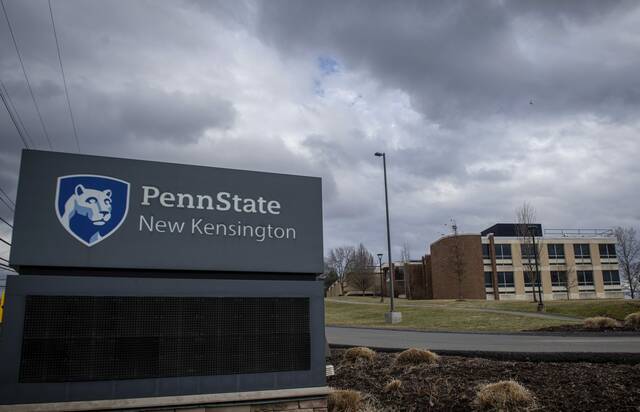Editorial: Penn State must fulfill its land grant mission
On Sunday afternoon, after 46 hours of dancing and months of fundraising, Penn State celebrated what is the university’s proudest moment each year. The total of money pulled in for Thon, an event billed as the largest student-run charity in the world, to fight cancer broke records at $17.7 million.
A little less than 46 hours later, Penn State President Neeli Bendapudi made another announcement. It did not come with deafening cheers and confetti. It was a letter posted to the university website.
Bendapudi’s messages often involve belt-tightening and cuts. This was not different. Twelve of the commonwealth campuses are on the chopping block.
The largest — Abington, Altoona, Behrend, Berks, Brandywine, Harrisburg and Lehigh Valley — are safe, as is University Park, of course. But that leaves Beaver, DuBois, Fayette, Greater Allegheny, Hazleton, Mont Alto, New Kensington, Schuylkill, Scranton, Shenango, Wilkes-Barre and York for possible closing.
That leaves four schools in the region that could disappear after the 2026-27 school year: New Kensington, Greater Allegheny in McKeesport, The Eberly Campus in Fayette County and Beaver in Monaca.
Bendapudi has a team working to recommend which campuses will continue. New offers and admissions at all campuses for the coming fall will continue, and students enrolling in the fall will have time to complete programs.
“Every student who begins a Penn State degree will have the opportunity to complete it at Penn State,” Bendapudi wrote.
But without commonwealth campuses, that’s simply a promise and not a commitment.
The purpose of the commonwealth campuses was to be a fulfillment of Penn State’s charter as a land grant university. The school was born out of the idea that an education should be accessible to every state resident.
The price of a Penn State degree has already threatened that. It costs over $20,000 a year to be a Nittany Lion.
Commonwealth campuses cut into that cost by allowing students to live at home, saving thousands of dollars in room and board. It also allows returning or non-traditional students to keep their jobs or support their families while training for new careers.
But aside from commitments to students, there is commitment to communities.
The Fayette campus was opened in 1934 as an undergraduate center for those who couldn’t afford — in time or money —the main campus. It closed during the war and reopened in 1965.
Greater Allegheny grew from offering courses for industrial workers in the 1930s to a center in Dravosburg in 1948. That center grew to a larger facility in McKeesport within just four years and would expand to a full-fledged campus where it has supported students for 70 years.
The New Kensington campus sits on land given to Penn State by Alcoa in the 1960s. It continues that education-business partnership with programs like The Corner, an innovation hub. Those hubs are largely tied to campuses to help foster entrepreneurship and new business.
Bendapudi is responding to declines in enrollment and increasing costs. That cannot be denied. However, treating this as a math problem ignores the university’s responsibility. It fostered these ties. It cannot walk away. Commonwealth campuses are not puppies to be abandoned at the pound.
Penn State cannot continue to trumpet itself as the state’s flagship of higher learning if it retreats from its obligations outside of Centre County.
Remove the ads from your TribLIVE reading experience but still support the journalists who create the content with TribLIVE Ad-Free.

